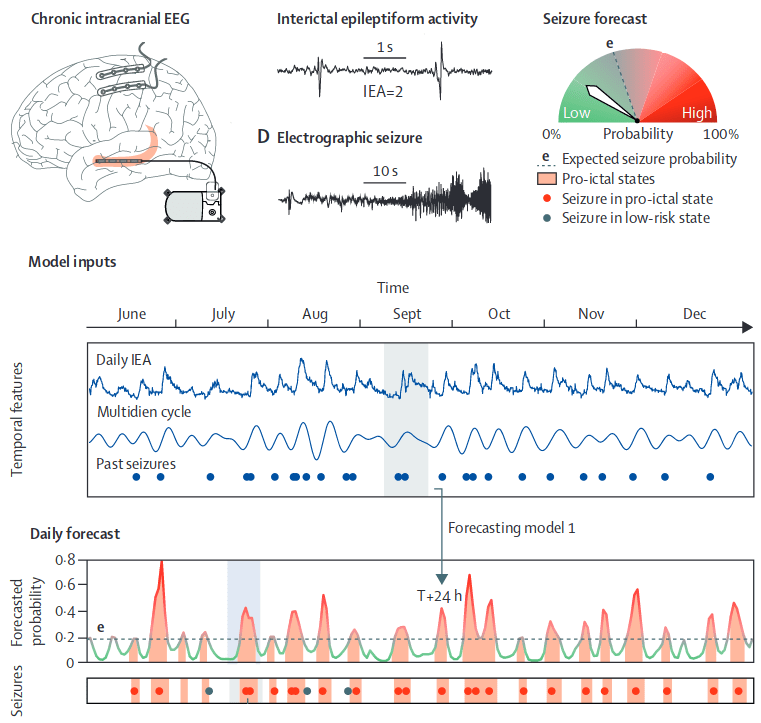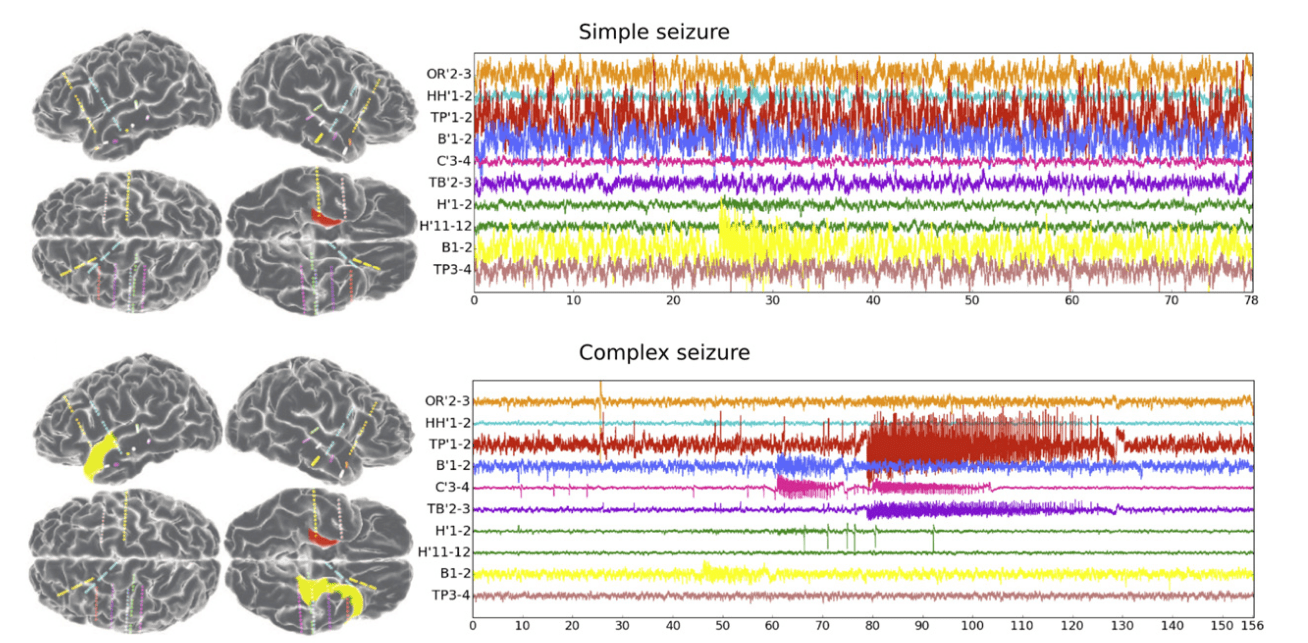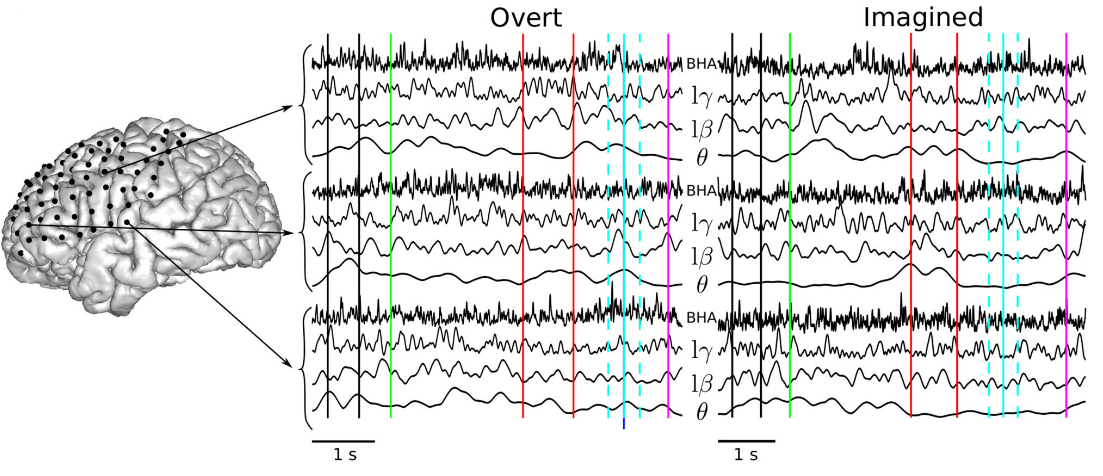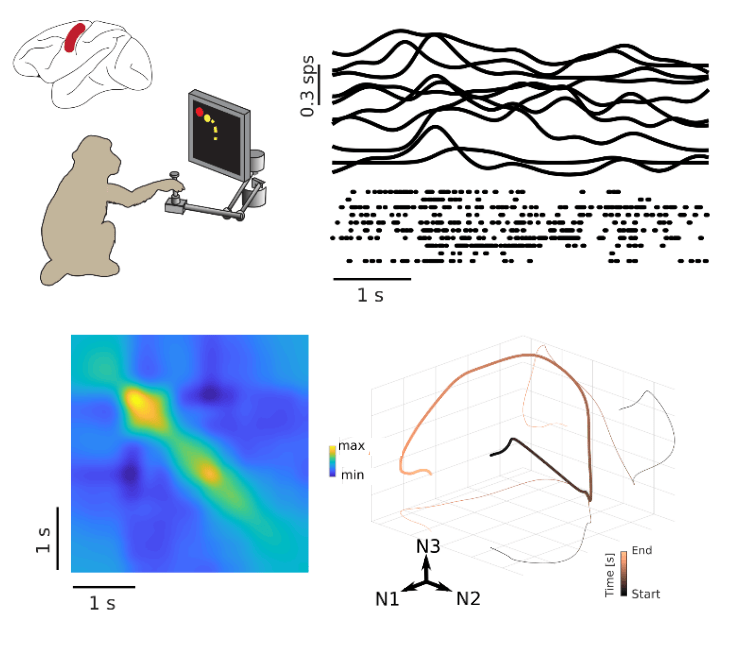Neural representations of speech
How are speech features represented and combined in the brain to form a unified meaning? Our research work aims to uncover the neural correlates of these representations, and the dynamical mechanisms by which they are transformed and integrated.
Key publications:
- Neural manifolds carry reactivation of phonetic representations during semantic processing
- Interpretability of statistical approaches in speech and language neurosciecne
- Imagined speech can be decoded from low- and cross-frequency intracranial EEG features.
Modeling neural manifolds
Neurons collectively and dynamically encode sensory and cognitive processes. We study the dynamical mechanisms by which network of neurons represent information in latent low-dimensional spaces, also known as neural manifolds.
Key publications:
- Misinterpreting the horseshoe effect in neuroscience.

Epileptic seizure forecasting
Developing reliable methods to predict seizures holds immense potential to improve the quality of life of patients with epilepsy. This field has recently progressed quickly thanks to the possibility of recording intracranial EEG human data over the course of several years. Our research leverages these long-term datasets to forecast seizures at short (minutes to hours) and long (days) time horizons
Key publications:
- Forecasting seizure risk in adults with focal epilepsy: a development and validation study.
- Seizure forecasting: bifurcations in the long and winding road.
- Chance and risk in epilepsy.
- Epilepsyecosystem.org: crowd-sourcing reproductible seizure prediction with long-term intracranial EEG.
- Human focal seizures can be predicted from multiunit spiking activity away from epileptic onset zones.

Epileptic seizure modeling
Seizures are characterized by synchronous activity of a large number of connected neurons. To control and abate seizures, it is crucial to gain a better understanding of the mechanisms of seizure synchronization across complex networks. Our research aims to model the dynamical principles of seizure propagation throughout the brain, at both the spatial scale of brain regions and small cortical areas (a few millimeters). This research resulted in the development of personalized methods that rely on seizure propagation patterns to identify potential brain areas for surgical removal.
Key publications:
- Predicting the spatiotemporal diversity of seizure propagation and termination in human focal epilepsy.
- Individual brain structure and modeling predict seizure propagation.
- The virtual epileptic patient: individualized whole-brain models of epilepsy spread.
- Permittivity coupling across brain regions determines seizure recruitment in partial epilepsy.


